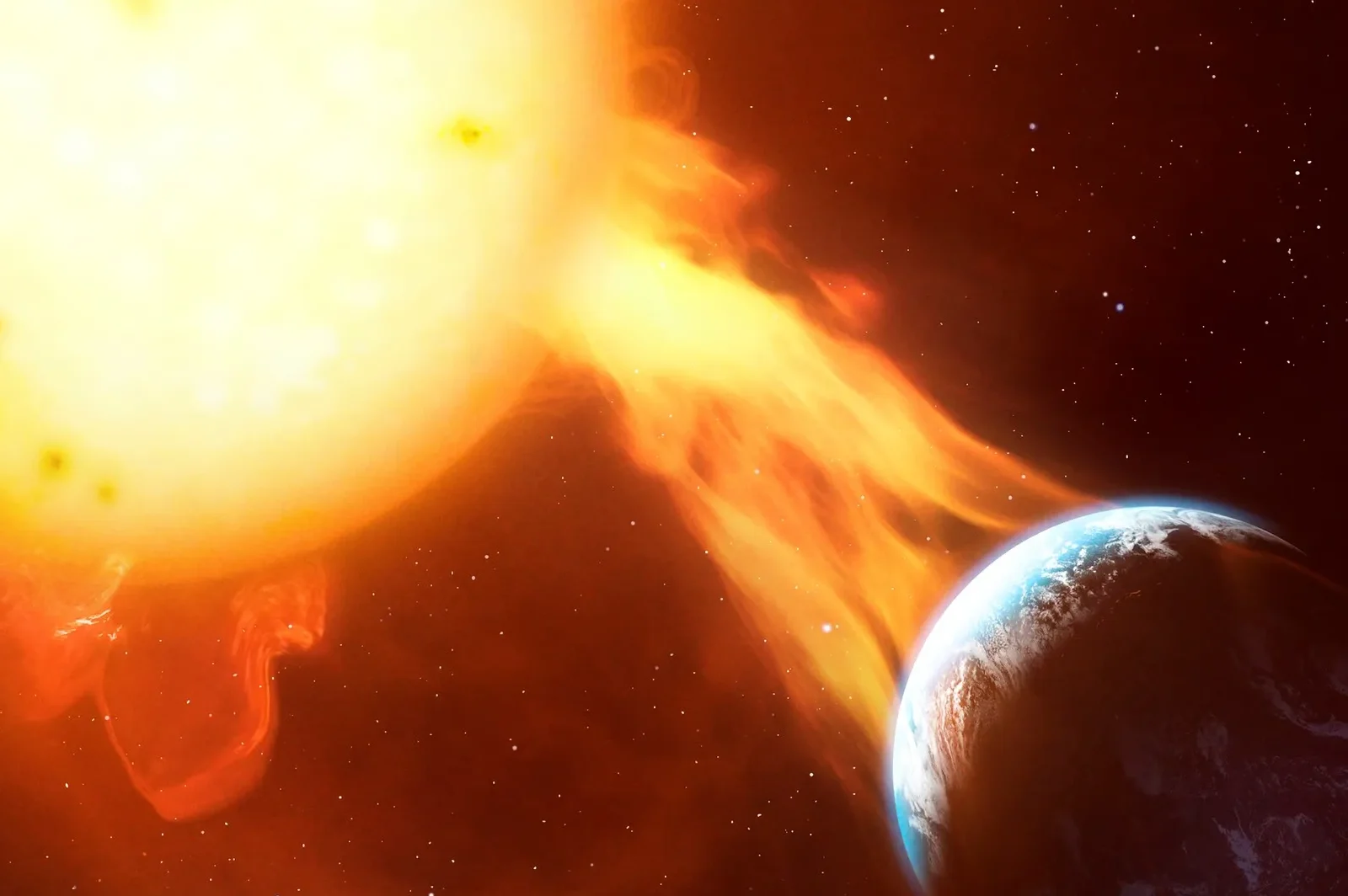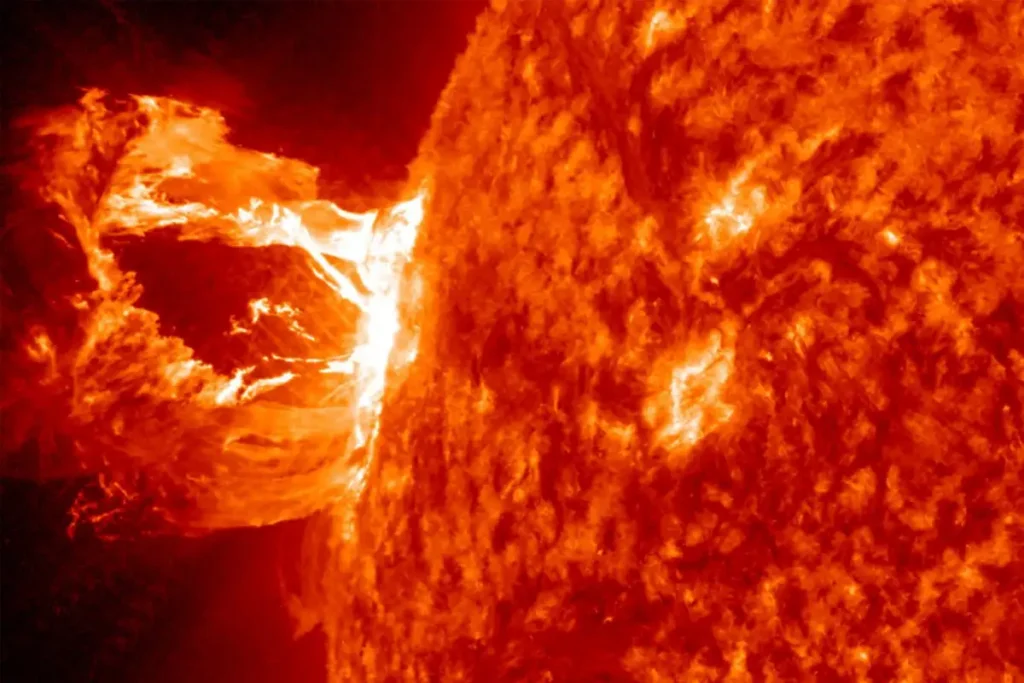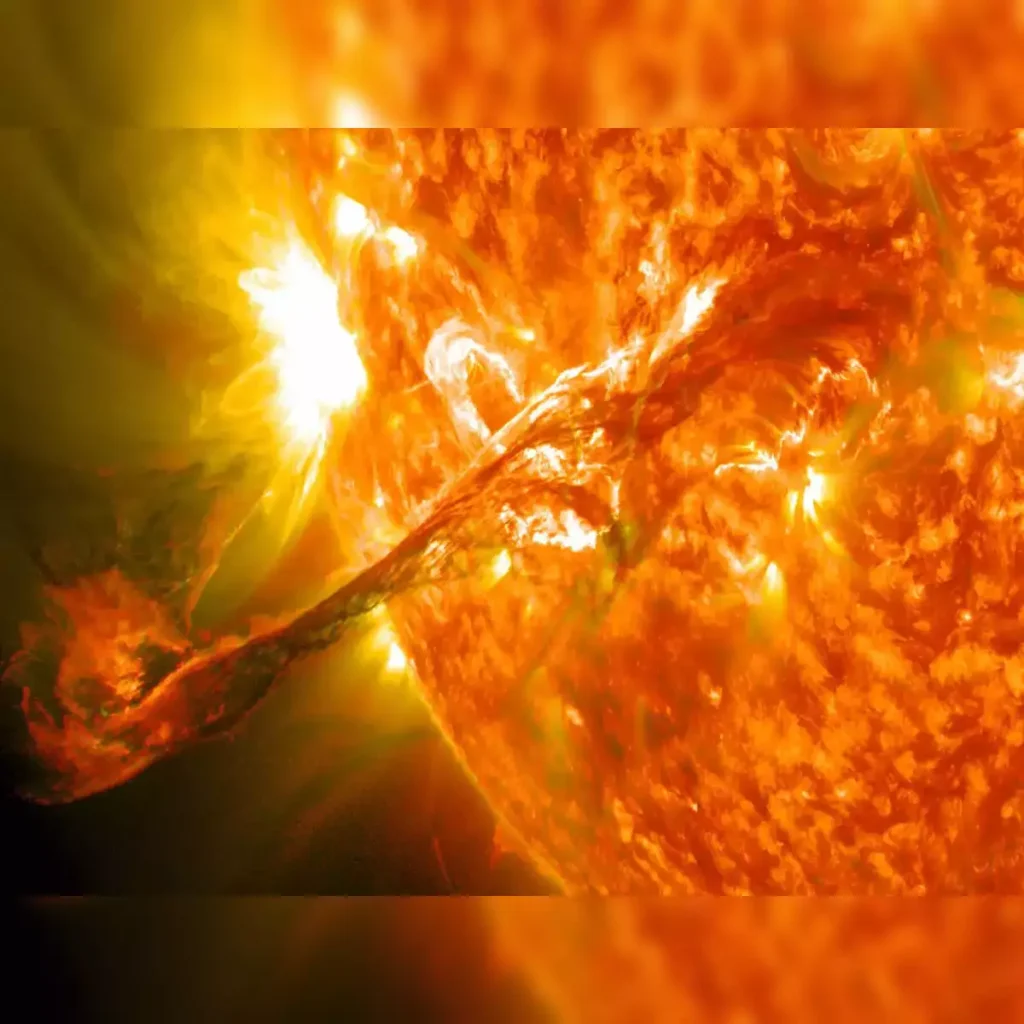Largest solar storm in two decades

The largest solar storm in two decades has drawn attention in the United States, and as a result, a warning has been issued.
The Space Weather Prediction Center (SWPC) issued the first largest solar storm warning in two decades on Thursday.
According to the SWPC, at least five coronal mass ejections (CMEs) directed toward Earth have been observed since Wednesday.
The largest solar storm in two decades could generate geomagnetic storms, as well as aurora borealis on the night of May 10.
“CMEs are bursts of plasma and magnetic fields from the solar corona. They cause geomagnetic storms as they head toward Earth.
The largest solar storm in two decades could generate geomagnetic storms, which in turn, can affect infrastructure in near-Earth orbit and on the Earth’s surface.
If so, communications, power grid, navigation, radio and satellite operations could be partially disrupted,” explains the SWPC.
But without a doubt, the largest solar storm in two decades could cause magnificent auroras in many parts of the United States this weekend.
READ MORE: WHAT ARE THE 5 BASICS OF PERSONAL FINANCE?

Largest solar storm in two decades
A severe geomagnetic storm is expected to hit the Earth on Friday, triggering colorful nighttime auroras, or northern lights.
U.S. residents could see moderate to strong geomagnetic activity beginning at 11 p.m. and lasting through Saturday.
Current forecasts for the largest solar storm in two decades project that the lights could be seen as far south as Alabama and California, according to the National Oceanic and Atmospheric Administration’s Space Weather Prediction Center.
The chances of seeing the lights will be greatest in the northern United States, Canada and northern Europe.
To maximize your chances of seeing auroras Friday night, look for a dark-sky location away from city lights.
Cloudless skies are also ideal. Unfortunately, considerable cloud cover will extend over the Great Lakes, Mid-Atlantic and Northeast, although some clear skies are likely. Most likely there will be clear skies over the central states and the West Coast.
The largest solar storm in two decades is tricky to forecast, and sometimes the predicted northern lights disappoint if a storm’s timing changes or its magnetic field is not aligned with Earth’s.
“Right now it’s a pretty volatile situation on the Sun that we’re monitoring very closely,” said Bill Murtagh, program coordinator at NOAA’s Space Weather Prediction Center. “We’re going to have an extended period of geomagnetic storming.”

The solar storm occurs when the sun is at its most active in about two decades, and is expected to remain that way for at least the rest of this year.
Meanwhile, auroras are created when energy and particles from the sun temporarily disturb the Earth’s magnetosphere, creating a geomagnetic storm.
READ HERE: WHAT IS THE FOOD CAPITAL OF CALIFORNIA?.
Some solar particles travel along our planet’s magnetic field lines into the upper atmosphere, exciting nitrogen and oxygen molecules and releasing photons of light of different colors.
The size of the sunspot group is actually on par with that of the 1859 Carrington event, considered one of the most intense solar storms to hit Earth, but Murtagh said this incoming geomagnetic storm will not be near the same size as the Carrington storm.






